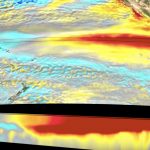 November 10, 2020 8:56 am
Published by Climate Extremes
November 10, 2020 8:56 am
Published by Climate Extremes
As a La Niña event intensifies in the Pacific, bringing increased rain to parts of Australia and a powerful hurricane season to the Tropical Atlantic, a new book reveals the dynamics and impacts of the El Niño Southern Oscillation (ENSO), the irregular cycle that switches the Pacific Ocean between these cool La Niña and warm El Niño events.
 April 1, 2020 10:00 am
Published by Climate Extremes
April 1, 2020 10:00 am
Published by Climate Extremes
A lot has happened over the past few months with the publication of high-profile and challenging research and the continuing growth, development and recognition for the RP4 team.
March 2, 2020 3:07 pm
Published by Climate Extremes
Agus Santoso (UNSW). Overview of ENSO book. Sebastian McKenna (UNSW). IOD representation in CMIP models Zoom details: Join from PC, Mac, Linux, iOS or Android: https://unsw.zoom.us/j/825572965
 November 25, 2019 12:46 pm
Published by Climate Extremes
November 25, 2019 12:46 pm
Published by Climate Extremes
This study found in CMIP5 models that are able to simulate both types of events, that convective extremes do not always coincide with warm extremes. The disassociation becomes more distinct under greenhouse warming with higher occurrences of convective extremes than warm extremes.
 February 5, 2019 12:53 pm
Published by Climate Extremes
February 5, 2019 12:53 pm
Published by Climate Extremes
We can expect more occurrences of extreme weather associated with eastern Pacific El Niño events (the strongest and most destructive of the two types of El Niño events), which will have pronounced implications for the twenty-first century climate, extreme weather and ecosystems.
 October 2, 2018 1:34 pm
Published by Climate Extremes
October 2, 2018 1:34 pm
Published by Climate Extremes
Forecasting El Niño Southern Oscillation (ENSO) events, and anticipating how they may change with global warming remains a significant challenge for climate researchers. An ENSO complexity workshop held in November 2017 produced a follow-up paper summarising what we know about ENSO and its predictability.
 July 25, 2018 3:00 am
Published by Climate Extremes
July 25, 2018 3:00 am
Published by Climate Extremes
It is hoped this proposed synthesis of two ENSO structures, their interaction with each other and how they respond to external forcing, will be the catalyst for future research and practical applications for forecasting and determining the impacts of present and future ENSO events.






